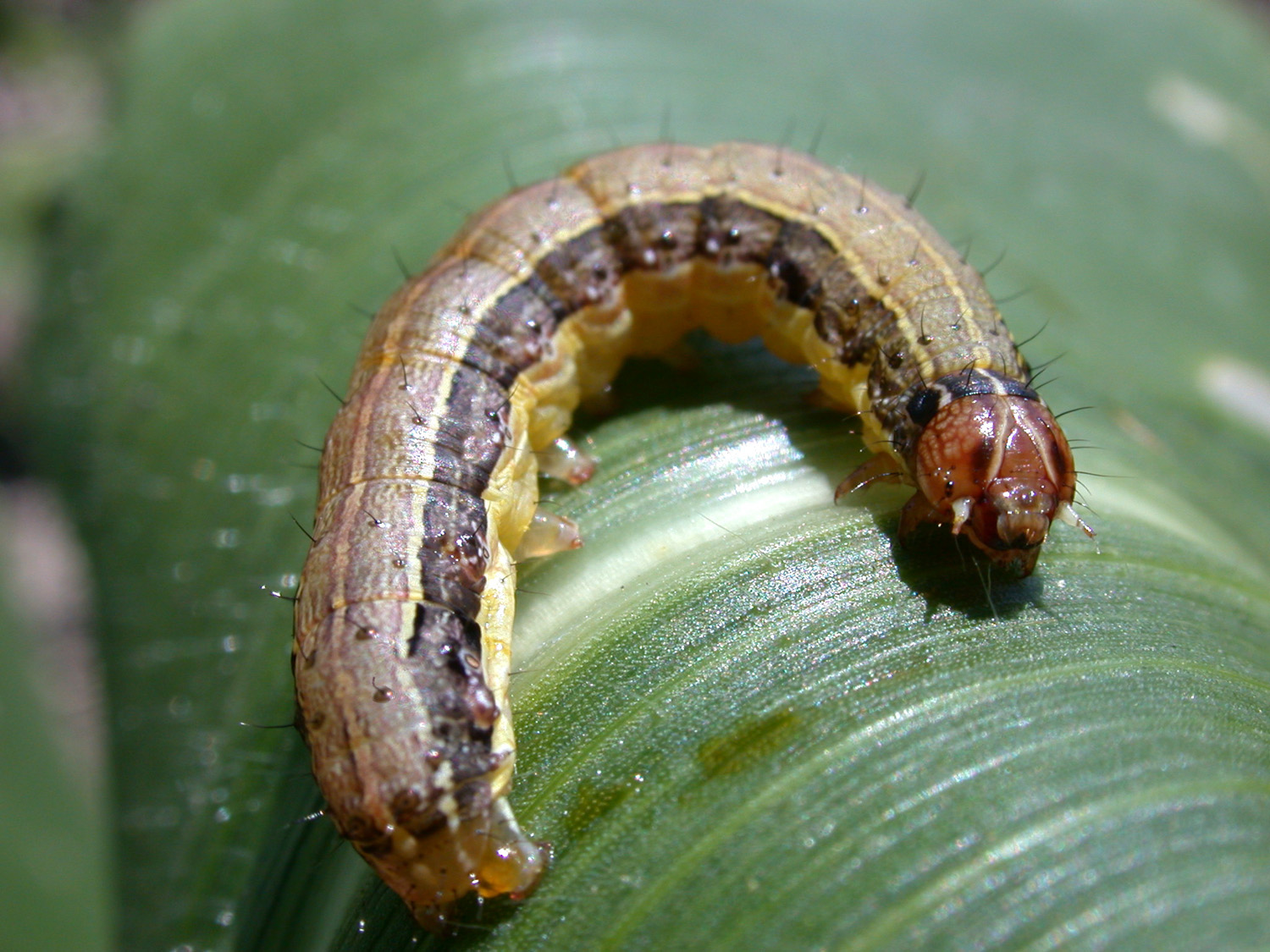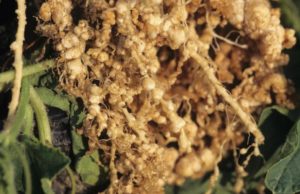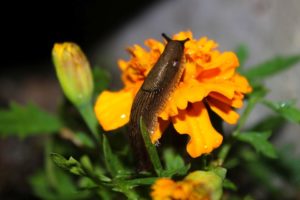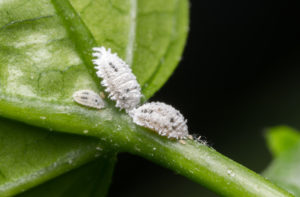Armyworms are not actually worms but rather caterpillars. They are the larval stage of nocturnal moths belonging to the Noctuidae family. The caterpillars measure between 1.5 and 2 inches (3.8 to 5 cm) long, and they feed on turf grasses, vegetables, and other plants. Unfortunately, an infestation of these little pests can destroy a crop in just a few days. That is because armyworms, unlike solitary cutworm larvae, feed in groups, giving them the appearance of an invading army, hence their name.
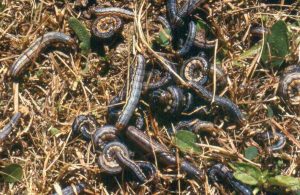
Damage to Plants
In the spring, the caterpillars remain at ground level as they feed on low-lying plants and grasses. As the season progresses, so do the larvae moving upwards to feed on taller vegetation. Early-stage damage is seen on leaves as the caterpillars feed on leaf margins, creating scalloped edges. Eventually, armyworms will consume most, if not all, of the leaf tissue, leaving “skeletonized” remains behind. They will also eat vegetables like tomatoes, for example, leaving small gouges in the fruit. They will also burrow into ears of corn. For fall armyworms, look for the worst damage to occur from August through October. They feed continuously but are most active in the early morning and late evening.
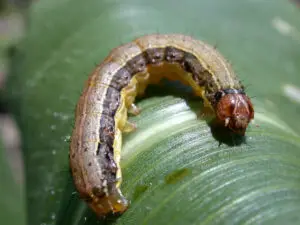
How to Identify Armyworms
There are several armyworm species. Their bodies are marked by rows of green, yellow, red, or brown stripes down their sides and backs. For example, fall armyworms (Spodoptera frugiperda) are brown with yellow stripes, while beet armyworms (Spodoptera exigua) are green with light-colored stripes. The caterpillars’ heads also vary in color, but each will have a distinctive inverted Y mark. Another universal characteristic is that when disturbed, the caterpillars curl up as a protective measure.
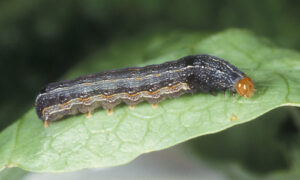
Armyworm Moths
Armyworm moths generally measure 1.5 inches (3.8 cm) in length and sport a mottled pattern on their forewings that is gray, tan, white, and black. They have a very small white or tan dot at the center of each forewing. Their hind wings are off-white with dark margins.
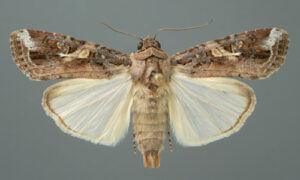
The moths typically lay their eggs in rows (one to several) on blades of tall grasses. Each may contain as many as 200 white to yellowish eggs. As the eggs mature, they will darken. Females will lay eggs for several days and may produce as many as 1,800 or more eggs.
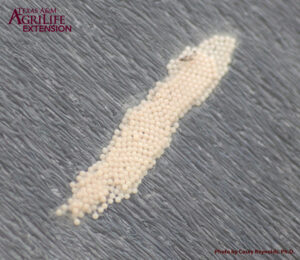
The lifecycle lasts about 60 days during the spring and fall and 30 days during the summer months. In the winter, the lifecycle can last up to 80 to 90 days. They can overwinter in warmer climates.
If you make a purchase using one of these links, I will receive a very small commission at no additional cost to you, and it will help me maintain this website. Rest assured, I only recommend products I actually like!
How to Prevent or Eliminate Armyworms
As the saying goes, an ounce of protection is worth a pound of cure. If you have had problems with armyworms in the past, consider installing row covers over newly planted crops before the moths have a chance to lay their eggs in your garden. You can also release beneficial nematodes in the soil. The microscopic worms will feed on armyworm eggs, larvae, and pupae.
In addition, plant crops, including flowers and herbs, that attract natural predators like beneficial insects. For example, Trichogramma wasps, lacewings, parasitic tachinid flies, and ladybugs will eat moth eggs and young larvae or parasitize the larvae. Birds and frogs will eat the moths and caterpillars.
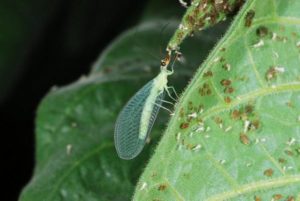
If you have seen armyworms in the garden, it is important to act right away. The quickest way to eliminate them is to remove them by hand and place them in a container of soapy water or feed them to chickens if you have them.
Apply neem oil that contains the naturally occurring Azadirachtin, which makes the treatment much more effective. It is an organic treatment that will smother the eggs and kill the larvae stage. This is the one I use.
You can also apply food-grade diatomaceous earth, also known as food-grade DE, on and around your plants. The microscopic sharp edges will cut the soft skin of armyworms.
BT spray or powder Bacillus thuringiensis var. kurstaki and Bacillus thuringiensis var. aizawai is effective against most caterpillars including armyworms, cabbage loopers, cabbage worms, hornworms, and cutworms.
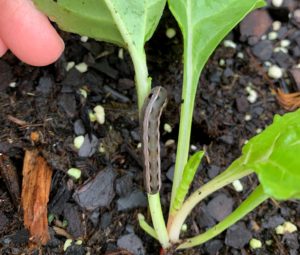
Be vigilant to inspect your garden daily, being sure to look under the leaves and on and just under the surface of the soil during the early morning or at night when they are more apt to be active.
Thank you for reading this article! If you found it interesting or helpful, please consider sharing it with others via email and social media!
